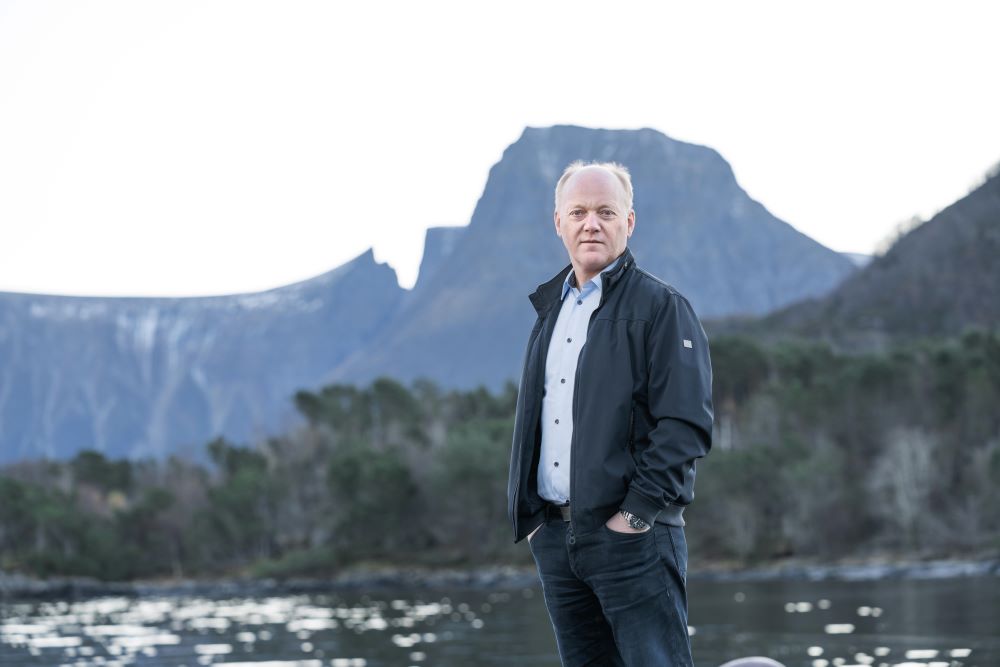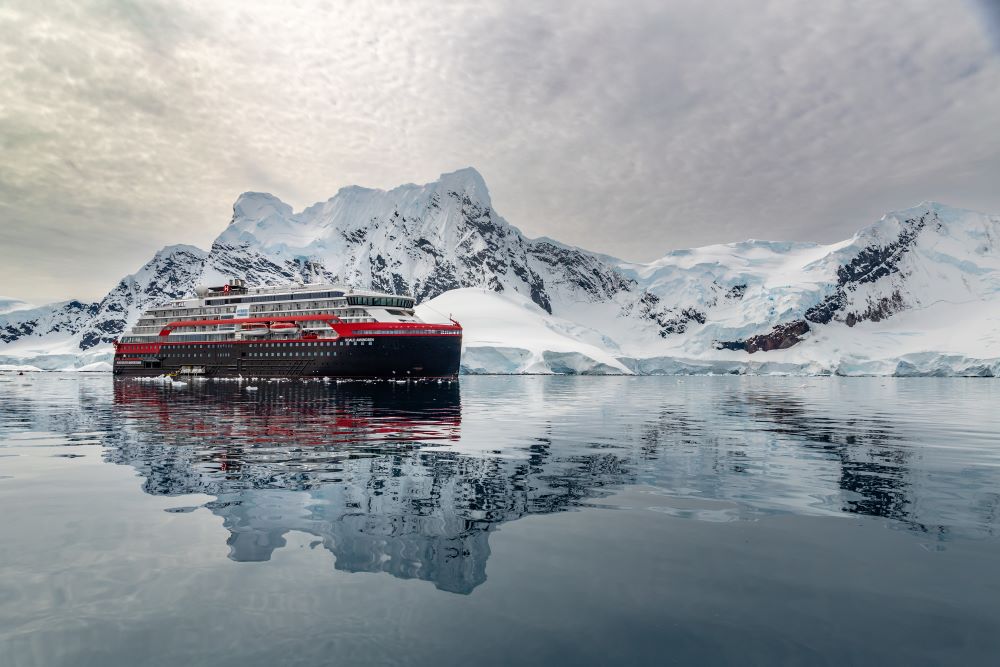From establishing the benchmark that set the standard for offshore supply vessels to advanced anchor handlers that transformed the oil and gas industry and a growing reference list in fishery and merchant ships, Kongsberg Maritime’s ship design history can be traced back 50 years with its origins in the heart of what is today’s maritime cluster on the west coast of Norway.
The company’s renowned UT series of vessels began life in the 1970s when oil and gas companies started to venture into the North Sea. These early explorers soon found the only choice of offshore vessel – the simple service vessels used in the relatively shallow waters of the Gulf of Mexico – to be lacking in capability and seakeeping.
Step forward Ulstein Trading (UT), a small ship design company located on the wild and rugged Norwegian west coast. Consulting with local fishing fleet owners, who had extensive experience of working in the North Sea, the company, then part of Ulstein Group, set to work on the first vessels specifically designed for the area’s harsh operating conditions. The result was the ‘UT’ design, and the first UT 704 platform supply vessel, Stad Scotsman, was delivered in 1974. This pioneering ship is still in service today, having gone through numerous changes of ownership and names.
Since 1974, more than 800 UT vessels have been built. While the majority are for offshore operations, the design has evolved to include a variety of other ship types including oceanographic research, coastal protection and most recently vessels designed specifically for operating in offshore wind farms. The latest UT delivery, the double-ended IWS Skywalker, is the first of six state-of-the-art wind farm service operations vessels for Norwegian customer Integrated Wind Solutions. The fully hybrid vessel, which can manoeuvre between wind turbines in either direction, features a range of Kongsberg Maritime equipment including main propulsion from four azimuth thrusters, various electrical systems and dynamic positioning.
In other markets, Kongsberg Maritime has delivered around 200 ships from its NVC family of designs. These include cargo ships, high-speed ro-pax ferries and an extensive range of vessels for the fisheries and aquaculture market. The company’s first exploration cruise vessel design, NVC 2140, is the latest addition to Hurtigruten Expedition’s fleet of custom-built ships in the shape of the Fridtjof Nansen and Roald Amundsen. The two ships are designed as Premium Class modern cruise vessels with a focus on high comfort with low noise, vibration and acceleration levels. Both feature advanced environmentally friendly technology to minimise emissions while they undertake expedition voyages in the Arctic and Antarctic regions, as well as traversing Norway’s long coastline.
Like the UT, the genesis of the NVC portfolio also goes back 50 years and starts on the west coast of Norway, at a design house called Nordvestconsult specialising in fishing and dry cargo vessels. Nordvestconsult was acquired by the Ulstein Group in the late 1990s. Ulstein Group itself was subsequently sold to British company Vickers, and Rolls-Royce in 1999, then in 2019 it became part of Kongsberg Maritime.

Einar Vegsund. Source: Cecilie Hatløy/Kongsberg Maritime
Huge pool of experience and data
Einar Vegsund, vice president of Kongsberg Maritime Ship Design, tells TNA that Kongsberg Maritime’s 50-year journey in ship design puts it in a unique position to offer innovative solutions. “Our ship design portfolio is extensive, with designs for all market segments. With 1,000 ships designed so far, we can tap into a huge pool of experience and data,” he notes.
Today, says Vegsund, the company’s ship design philosophy is centred around three key pillars: safety, operational efficiency and sustainability. “The first is always safety,” he stresses. “Many of our vessels operate in some of the world’s harshest conditions, so safety is always at the forefront of our thinking for each design.”
Operational efficiency is another crucial element. With shipowners and operators investing millions in vessels that can operate efficiently for decades, the design team works with them to fine-tune specifications and develop ships tailored for their exact needs.
The most significant driver impacting how Kongsberg Maritime designs ships in the present day is sustainability, according to Vegsund. “It’s not only regulators that are demanding ships have lower emissions,” he explains. “Owners, faced with higher fuel costs, want vessels that use less energy, so there is a shift towards more electrification and battery-hybrid solutions. The use of alternative fuels is another exciting area for us and we’ve already had approval to proceed with ships using methanol and ammonia fuels.”
Based in Hjørungavåg and Ålesund, the Kongsberg Maritime ship design team includes naval architects and technology specialists within all disciplines, including extensive and understanding of hydrodynamical optimisation. With advanced design tools and AI, the team has an effective way of calculating the key elements of a ship’s design, especially hull form.
A ‘whole ship’ approach
As part of a wider global technology company, Kongsberg Maritime Ship Design Solutions can draw on an impressive breadth of technology – mechanical, electrical and digital – that can be incorporated into its ships. “This adds a different dimension to what we can offer our customers,” says Vegsund. “We can fully integrate our equipment within our design and consider a ‘whole ship’ approach, working with customers to offer modern solutions in an efficient way.”
He adds, however, that while Kongsberg Maritime is perhaps most recognised for its in-house technology integration capabilities, in terms of ship design that is not the complete story.
“Kongsberg Maritime produces a large range of products and systems, from highly efficient propulsion to deck machinery and advanced bridge systems, so naturally we look at how we can best combine our equipment into our ship designs,” he says. “Sometimes that means we provide a ship with a lot of our equipment into an integrated solution, such as the oceanographic research ships or large anchor handler designs. Other times we work with customers to incorporate other technology in a way that can operate within our designs.”
Vegsund says that the past five decades has seen major steps forward in terms of safety, technology and operational capability and predicts that the years to come will see an even faster rate of change. “Digital technologies play a big part in reducing emissions from ships and they also simplify and automate more aspects of ship operation going forward,” he says. “This development will continue to influence how ships are designed, as will the need to accommodate alternative fuels in their various forms.”
“Our designs continue to evolve to meet the challenges ahead and give owners the confidence to invest. It really is an exciting time to be a ship designer, and a unique opportunity to help shape the future of ship design and operation,” he concludes.




